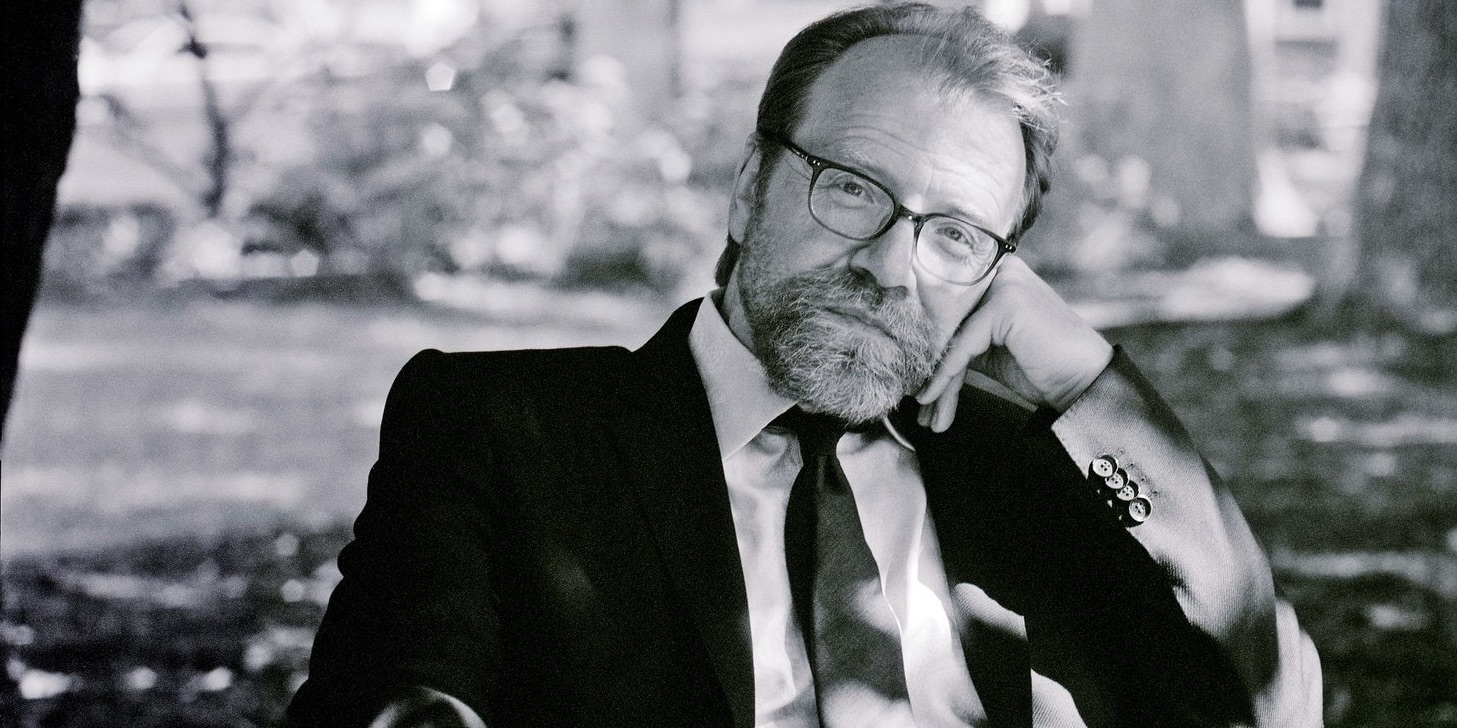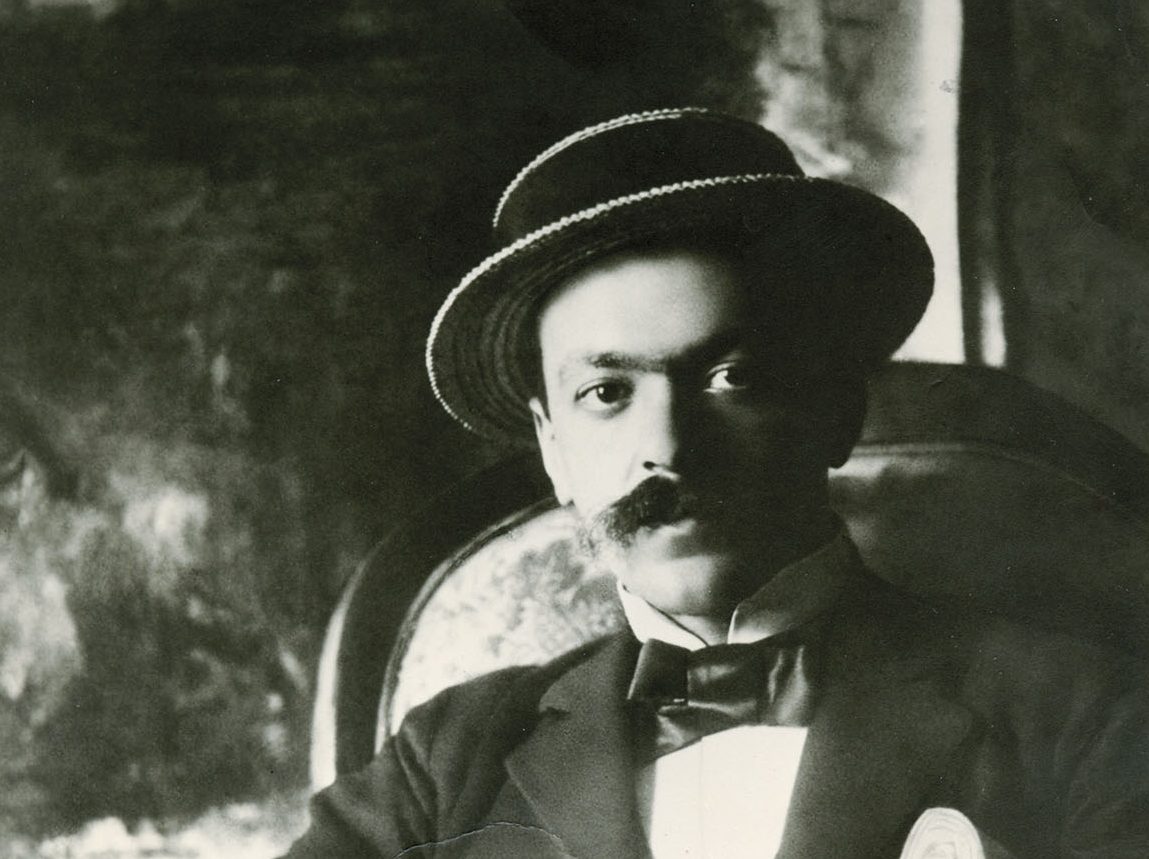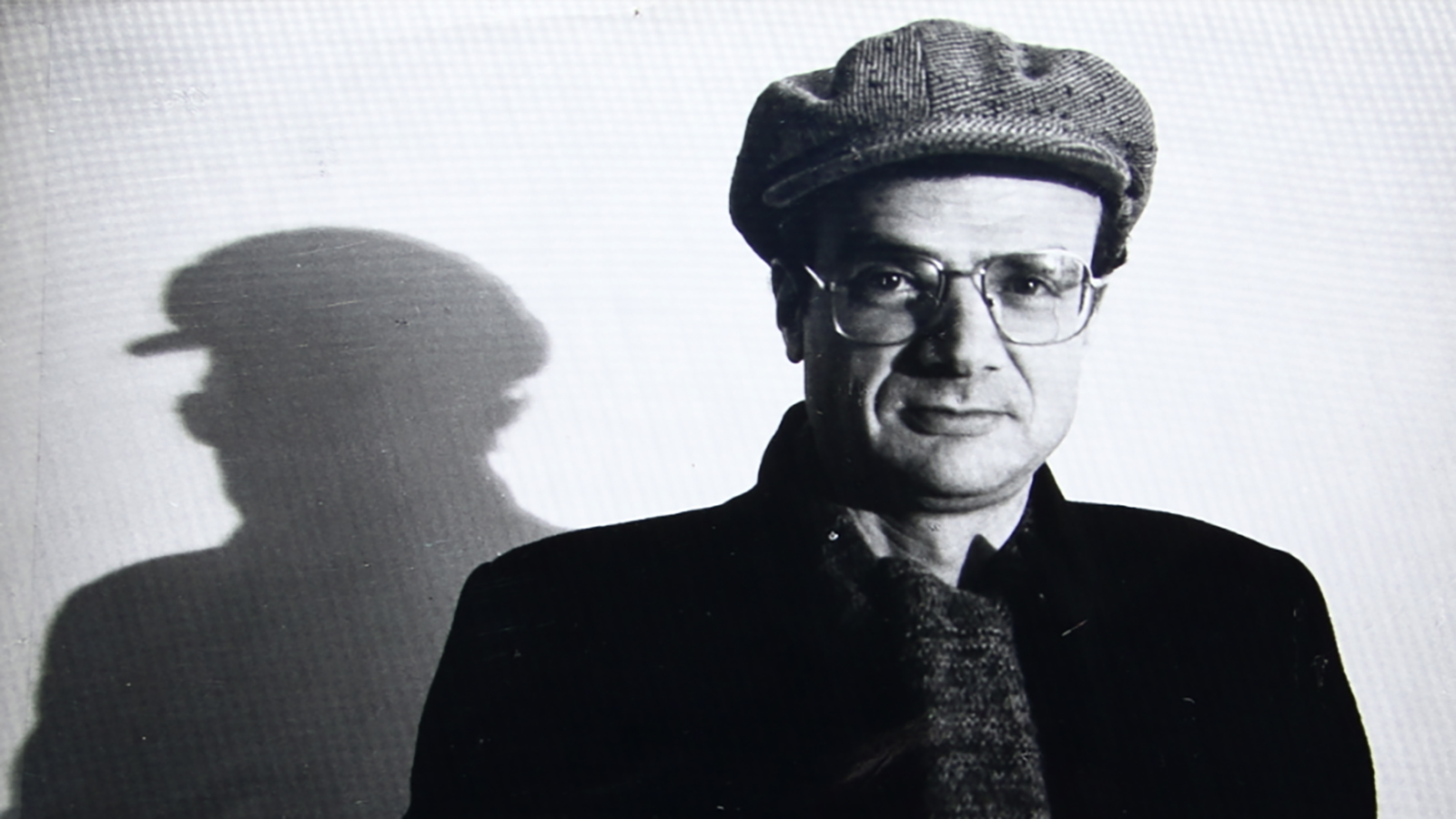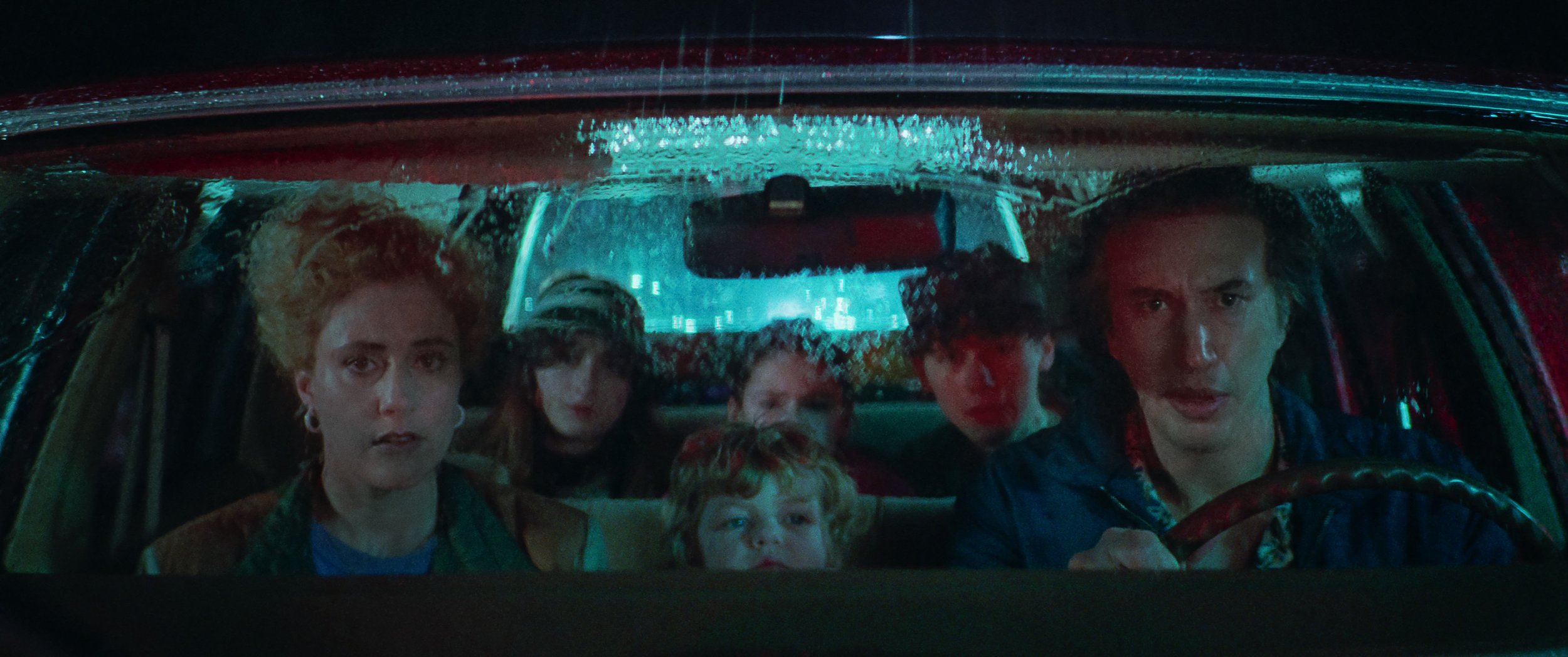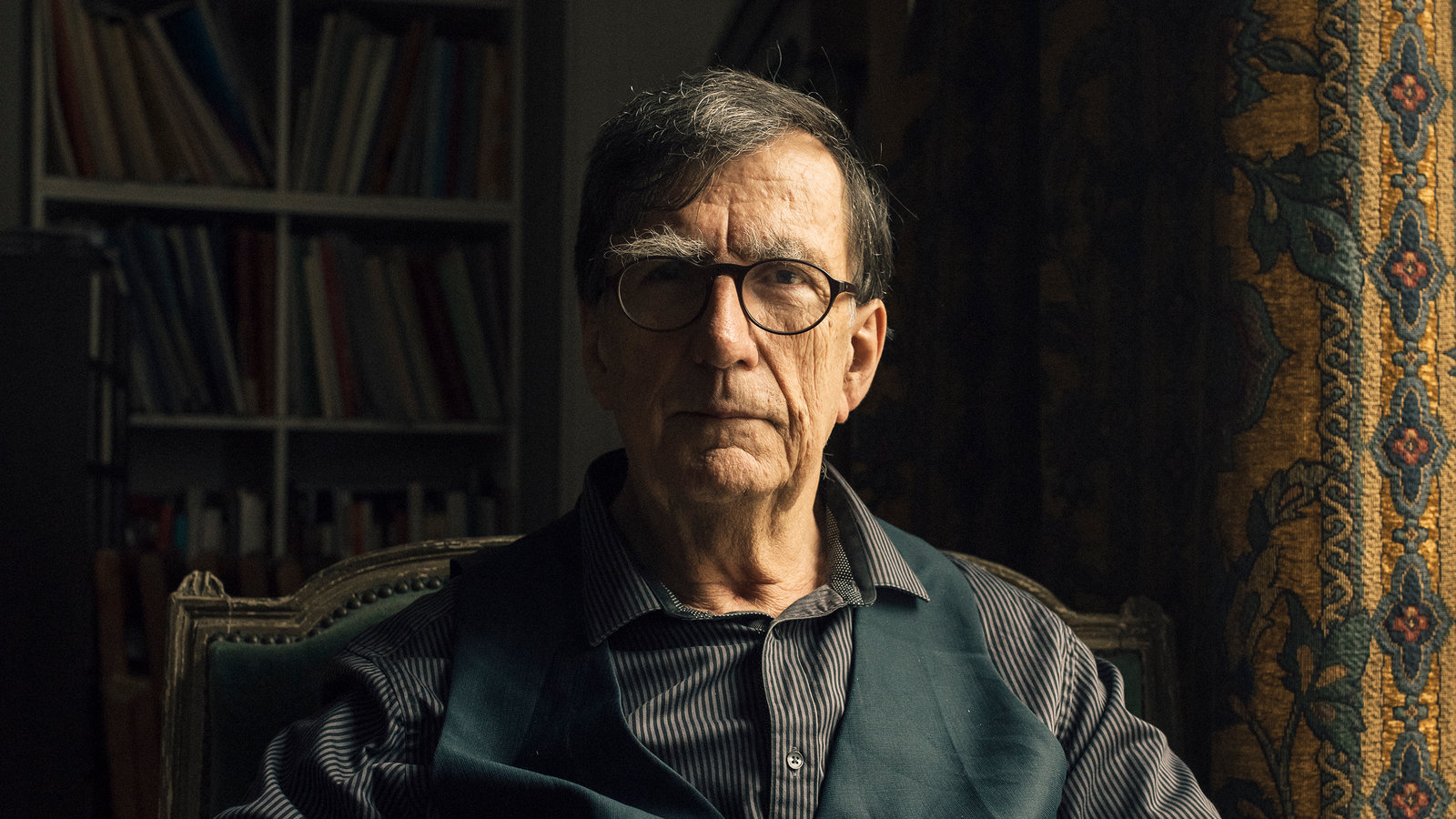Dénouements characterized by misery and impotence seem predetermined in George Saunders’s early work, and tend to enhance the stories, liberating his satirical instincts. The hapless protagonists in Pastoralia (2000), still the finest of his short story collections, are locked into destructive narratives, played out in pasteurized corporate spaces, Gethsemanes and bleak visions of the future, yet the stories are ludic, full of slants and opposing charges, snapping turns and comedic innovations. By the time of In Persuasion Nation (2006), this brutality had acquired, in many places, an overtly political edge. In an interview from 2009, Saunders explained that he couldn’t help but write ‘what was really in my mind and heart’, and, after 9/11 and the invasion of Iraq, ‘what was in my mind and heart was, I guess, more linearly related to what was in the news.’ The strongest stories in In Persuasion Nation are narratives of paranoia. Saunders conceived ‘Adams’ as an allegory for the Iraq war (its title is an anagram), which then evolved into something more opaque and absurdist. ‘The Red Bow’ opens after a child has been killed by a rabid dog. The family want to alchemize their terrible grief into vengeance, so set about destroying any other infected dogs, then the ‘Suspected Infected’, and, finally, every animal in the neighbourhood. ‘Anyone objects,’ the bereaved mother orders, ‘kill them too.’
Obama’s election saw Saunders predicting a corresponding shift in his fiction. ‘Relieved’ that the levers of power were in safer hands, Saunders’s imagination could ‘shift back to being concerned with what I think of as general human foibles, instead of particular temporal human foibles’ (he confessed he was ‘kind of sick of politics’, ‘sick of all this right vs. left fighting’). This set the stage for the more sentimental mode of Tenth of December (2013), which won the Folio Prize, as well as his debut novel, Lincoln in the Bardo (2017), which was awarded the Booker. Though still shot through with characters who experience terrible things, who frequently do terrible things, the grim trajectories of his early-career stories gave way, not to happy endings exactly, but more hopeful ones: finales in which feelings ‘expand’, ‘extend’, ‘encompass’, passing across the boundaries of flesh, evoking the possibility of togetherness. At the end of Lincoln in the Bardo, Abraham Lincoln’s personal sorrow at the death of his young son ‘extended to all in an instant’, for he saw ‘we were all suffering; that whatever way one took in this world, one must try to remember that all were suffering’.
Such sentimentalism is less in evidence in Saunders’s latest collection, Liberation Day (2022), his first in ten years. As a voice issuing from a beam of light has it: ‘You are trapped in you’. The words sound a bleak rebuke to the eponymous Mom in ‘A Mom of Bold Action’ when she tries, and fails, to imagine forging a connection with a man whom her husband recently beat up (they mistakenly believed he’d knocked over their child). It is a sad reminder of our ineluctable separateness from one another, containing no salve or analgesic in its assessment of the world’s current state, which Saunders has always thought fiction best placed to lay bare. Saunders is known for his interest in dystopias, nineteenth-century American history and the commodification of everyday life, and his taste for weird, inventive deployments of voice and quirky pyrotechnics (speaking beams of light, for example). But the concern that compels him, and makes his writing compelling, is the timeless quandary compacted in the beam’s utterance: the problem of what, if anything, we can really know of other people.
In the title essay of his first nonfiction collection, The Braindead Megaphone (2007), Saunders suggested that the marathon process of revision to which he subjects his stories is designed both to increase their complexity and to hone their morally improving function: to ‘make us humble, cause us to empathize with people we don’t know’. A good story, he continues, allows us to ‘imagine them as being, essentially, like us’. By deepening and expanding the sympathetic imagination, stories can offer a kind of tutelage in the art of compassion. The fact we cannot read one anothers’ minds or live in one anothers’ bodies is a condition that storytellers of Saunders’s persuasion interpret as a summons or cue, deploying narrative to lessen our and others’ fundamental solitude, or at least to school us in living with it more humanely. Even though his oeuvre may be peopled with cruel and violent characters – rapists, child-beaters and modern-day slavers – often destined for failure or humiliation, we always feel, beneath the surface, the beat of a firmly ethical pulse, an underground stream of empathy, and we rarely doubt the essential niceness and kindly designs of their creator.
Indeed, these days Saunders may be nearly as well-known for his kindly designs as for his creations. An approachably eloquent spokesperson for fiction – he has taught on the creative writing MFA programme at Syracuse for over twenty years, and has written extensively about the art of short story writing in The Braindead Megaphone (2007), A Swim in a Pond in The Rain (2021), and latterly on his Substack ‘Story Club’ – Saunders has over the last decade achieved a degree of celebrity and influence that transcends literary culture. With his faultless public persona (avuncular, gracious, generous, Buddhist) and highly developed sense of the moral possibilities of storytelling, Saunders today verges on a kind of all-purpose sage (in 2013 he made TIME magazine’s list of the 100 most influential people in the world, while his filmed commencement speech on kindness at Syracuse the same year has reached hundreds of thousands of viewers).
Yet the twin aims of Saunders’s tireless revising – to achieve complexity and promote sympathy – can seem, from a certain angle, if not incompatible then at least vying aspirations. Doesn’t coaxing us to ‘imagine them as being, essentially, like us’ risk dissolving complexity by implying we are all, at bottom, the same? (It is not, one might object, a requirement of empathy – the ability to understand and appreciate the feelings of another – that we assimilate our identities.) In the course of Saunders’s career, it has sometimes seemed that his most successful fictions are those that outrun any morally instructive designs, scotching our expectations. If Tenth of December and Lincoln in the Bardo represent a period in which Saunders’ ethical intentions for fiction and the work itself were most closely aligned, their best moments nevertheless fight against simplification. (Saunders himself has expressed a preference for work that outstrips the author’s intentions. An allegorical story, for example, must exceed its initial premise, otherwise it’s just ‘a self-reifying scale model’: ‘snore’.)
*
In Liberation Day, one detects renewed scepticism about the possibility of bridging our apartness. Complexity for the most part trumps moral clarity, yielding some of the most interesting and probing stories Saunders has ever written, as well as a few of the least. The return to the mood of CivilWarLand in Bad Decline (1996) and Pastoralia (2000) is not difficult to parse; all but one story in Liberation Day were published after Trump’s election. Saunders found, once again, that he could no longer turn away from the ‘ugliness and sordidness’ of US politics. Surveying an acrimoniously polarized America, the stories in Liberation Day do not end with gushing passages where characters reflect on their shared suffering, but slink back in on themselves, back to the nuclear family, back to the prescribed societal order, without redemption or heroism.
Liberation Day’s title story is arguably the most layered that Saunders has written. As in ‘The Semplica-Girl Diaries’ from Tenth of December, in which wealthy suburbanites have immigrant women strung up as decorations in their front yards, individuals, driven ‘by hardship’, ‘consent’ (a term problematized at a critical juncture) to have their memories erased and become ‘Speakers’. ‘Pinioned’ to the walls of mansions, the Speakers entertain the owners and their guests with theatrical monologues and musical performances of historical battles. One is the Battle of Little Big Horn, when several thousand indigenous Plains Indians were ambushed by a cavalcade of the United States Army, and defeated them. The son of one rich family chastises his father for the Speakers’s production ‘badly neglecting the Indigenous perspective’ (the politically engaged, but often naïve, young person is a new character on the margins in Liberation Day). The Plains Indians’ ‘stunning victory is mere prelude; the colossus that is the white nation, galvanized by this humiliation, will soon enact a merciless revenge’. The story ends with a crackerjack set piece: the intrusion, during the play’s intermission, of young radicals arriving to liberate the Speakers. But while the Semplica-Girls made their getaway, this is not a collection in which power structures are overturned. The gear shift is more subtle, a liberation of mind rather than body. The Speakers, now cognizant of their captive state, are no longer able to perform with the innocence they had previously, but nor can they break out from their servitude.
The other story in Liberation Day that feels new is the strange, affecting ‘Sparrow’. It is delivered from a perspective Saunders has not attempted before: a first person that disperses into a chorus – residents of a small town who witness a quiet story of ordinary love from a sceptical distance. It stands out for its unusual stillness, its lack of gimmickry or violence. Rather, the tension that moves it onwards is drawn from the gap between the chorus’s cynical attitude to the couple and the genuine reciprocity in their developing romance, which we come to understand only by the lightest of authorial touches.
But despite the welcome return of the darkness of early collections, the overall quality of Liberation Day is more mixed, with the most overtly political narratives distinctly clunkier than previous ones. ‘Love Letter’, among the weaker stories, is an epistolary narrative in which a man responds to his grandson’s request for help after one of his friends has been arrested. The grandfather advises him to step back and ‘think as they do’ – ‘they’ being the authoritarian government run by the son of a ‘clownish figure’ – a realpolitik variation on what Saunders once described as the moral purpose of stories (to ‘imagine them as being, essentially, like us’). The grandfather would rather look back nostalgically to times like ‘that day when all of us hiked out at Point Lobos’, believing ‘the other stuff’ – politics – ‘is only real to the extent that it interferes with those moments.’ The reader of course is not expected to ally herself with the grandfather, but at such moments politics can seem like an interference in Saunders’s fiction, too.
A few stories are essentially bleaker revivals of conceits found in previous collections. In ‘Ghoul’, a dictatorial management team encourages those working at a Hieronymus Bosch-esque hallucination of a medieval theme park to inform on one another if they ever step out of character. But while the protagonist in Saunders’s early theme park re-enactment story, ‘Pastoralia’, repeatedly chooses not to inform on his cave-mate (it’s a Prehistoric Man re-enactment), in ‘Ghoul’, ratting colleagues out is already unquestioned practice. ‘We pass our days enacting insane rituals of denial!’ cries out one worker, and is immediately kicked to death by his colleagues. ‘Elliott Spencer’ recycles material, too. Homeless people are taken to a facility where their memories and faculties of speech are wiped in order that they might re-learn language, and a worldview with it, from scratch – according to a very specific agenda. Once they can speak again, the subjects are taken to protests and instructed to stand on one side of a divide manned by a sea of police so as to ‘bellow’ phrases like ‘Bastards, Turds, Creeps, Idiots’ at those on the other side (who are later revealed to be ‘union-organizer folks’ some weeks, other times ‘unarmed middle school teachers’). It is an undemanding allegory, which closely echoes a scene from Trump rallies Saunders described in a feature for the New Yorker in 2016: ‘Trump supporters flow out of the Convention Center like a red-white-and-blue river, along hostile riverbanks made of protesters, who have situated themselves so as to be maximally irritating.’
Since Pastoralia, Saunders has regularly dramatized his concern with the efficacy of empathy by way of dual perspective narratives, a close third that flips between two protagonists every few paragraphs. Like ‘Adams’ (In Persuasion Nation), ‘A Thing at Work’ is a study of escalation. Gen and Brenda are feuding colleagues; each has some leverage. Gen knows Brenda has been stealing coffee pods from the break room. Brenda knows Gen is using company money to finance an affair. Gen’s primary concern is that she will be perceived as ‘the snob who enjoyed good wines and custom mustards and kicking the white-trash lady when she was down’. As a low-paid employee on the brink of destitution, Brenda stands to lose everything if Gen reveals her secret. The overall effect is unsatisfying, the story’s form mapping too neatly onto its primary argument – that we fail to understand one another’s interior lives, especially across class lines.
*
The wish to circumvent the fact that ‘You are trapped in you’ perhaps explains why Saunders’s work features so many ghosts – discarnate forms that can traverse otherwise uncrossable boundaries. The ghosts in Lincoln in the Bardo enter into one another to discover unique but comparable and lovable souls. In ‘commcomm’ (In Persuasion Nation), as two characters progress towards an afterlife the narrator can only describe as ‘Nothing-Is-Excluded’, they ‘grow in size, in love’, the distinctions between them vanishing (a version of this sentiment ends up in Saunders’s 2013 commencement address: ‘my heartfelt wish for you: as you get older, your self will diminish and you will grow in love. YOU will gradually be replaced by LOVE’).
David Foster Wallace ascribed to literature a similarly compassionate, connective function (around the time that Infinite Jest came out in 1996, Wallace reportedly pronounced Saunders, whose first collection had also just appeared, the most exciting writer in America). For Wallace great literature has the capacity to make one feel ‘unalone’. When I read that statement as an undergraduate, I copied it down as fact. Now I understand it as closer to a plea. In Wallace’s devastating short story ‘Good Old Neon’ (Oblivion, 2004), death is also imagined as a route out of our failures to understand one another. A man commits suicide and discovers life had been like trying to see one another through keyholes. After death, the doors are unlocked and ‘every moment of your life turned out now to be somehow fully open and expressible’.
There are no more ghosts in Liberation Day, and the afterlife offers little salvation or release. In ‘Mother’s Day’, after a life spent being mistreated by an alcoholic, philandering husband, and neglecting her own children, Alma dies of a heart attack. She arrives in a bardo-like realm where she is allowed to choose who she wants to be now. Would she like to return to a younger version of herself? When she was a child? Even earlier: a foetal state? She declines each possibility – ‘As long as she was Alma, she’d be mad.’ The only way to free herself, Alma realizes, is by becoming nothing at all.
Read on: Anahid Nersessian, ‘For Love of Beauty?’, NLR 133/134.
